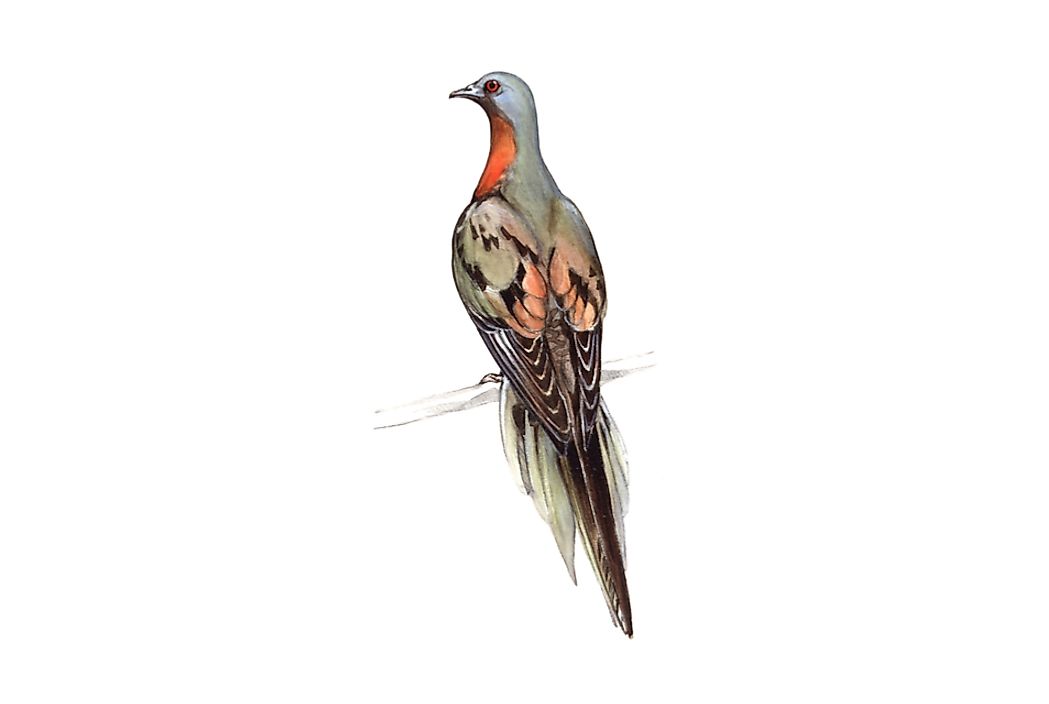The Known Endlings of the World

An endling is the last known individual of a particular species or subspecies. Once it dies, the species will become extinct, never to walk the earth again. Alternative words that have been suggested instead of endling include ender, relict, and terminarch. The first known use of the word endling occurred in an issue of the scientific journal Nature on April 4,1996.
Some of the Known Endlings
Passenger Pigeon
The passenger pigeon was a member of the Columbidae family of doves and pigeons. The species was hunted on a massive scale for decades, especially in the 19th century, as a source of cheap food. Massive deforestation destroyed the animal's habitat. This led to the slow decline of the species until the 1870s when its numbers plummeted. The last wild passenger pigeon was believed to have been killed in 1901.
By 1907, the Cincinnati Zoo had the world's last three remaining passenger pigeons, two males and a female named Martha. In April 1909 and June 1910, the two males died. This left Martha as the last of her species and she become something of a celebrity due to this status. On September 1,1914, Martha died of old age. She was believed to be 28 or 29.
Kauaʻi ʻōʻō
The Kauaʻi ʻōʻō was a member of the now extinct Mohoidae family of the Hawaiian species of nectarivorous songbirds. The Kauaʻi ʻōʻō itself was endemic to the subtropical forests on the island of Kauaʻi and could only be found there. Due to invasive species, disease, and habitat destruction, the species began to decline in the early 20th century.
In the 1970s, the only known footage of the bird was taken. In the late 1970s and early 1980s, several hurricanes hit the islands which destroyed many trees that had cavities where the birds lived. The last Kauaʻi ʻōʻō was sighted in 1985. In 1987, Kauaʻi natural history expert David Boynton (1945-2007) captured the last sound recording of the species. It was the mating call of a single male, calling out to a female that would never come.
Rabbs' fringe-limbed treefrog
The Rabbs' fringe-limbed treefrog was a member of the Hylidae family of frogs. The species was discovered in 2005 and was endemic to Panama. The species was only ever found in the cloud forests in the mountains above the town of El Valle de Antón, but have not been seen or heard from since 2007. It is believed that the species was wiped out because of Batrachochytrium dendrobatidis, a fungus that causes the disease chytridiomycosis.
In 2009, the last known female of the species died. This was followed by the second to last known male being euthanized in February 2012. This left Toughie, who was captured in 2005 during a conservation mission, as the last member of the species. He lived at the Atlanta Botanical Garden in Georgia and actually had tadpoles with the last female. Unfortunatley, all of the tadpoles died. In 2014, Toughie was recorded vocalizing for the first time since he was taken into captivity. Toughie died on September 4, 2016.
What can be done to help protect endangered species?
There are many things that can be done to help endangered species to help the animal from going extinct. People can volunteer their time or donate money to a reputable local, state, or international organization whose goal is to help protect endangered species. One can also petition their lawmakers to support laws that would help to protect and support species that are in danger.
The known endlings of a species or subspecies
| Species | Zoo | Year died |
|---|---|---|
| Aurochs | N/A | 1627 |
| Great Auks | N/A | 1852 |
| Quagga | Natura Artis Magistra | late 1870s |
| Passenger Pigeon (Martha) | Cincinnati Zoo | 1914 |
| Carolina Parakeet (Incas) | Cincinnati Zoo | 1918 |
| Heath Hen (Booming Ben) | N/A | 1932 |
| Tasmanian Tiger (Benjamin) | Hobart Zoo | 1936 |
| Kauaʻi ʻōʻō | N/A | 1987 |
| Dusky Seaside Sparrow (Orange Band) | N/A | 1987 |
| Partula Turgida (Turgi) | London Zoo | 1996 |
| Pyrenean Ibex (Celia) | N/A | 2000 |
| Pinta Island Tortoise (Lonesome George) | N/A | 2012 |
| Partula Faba | Bristol Zoo | 2016 |
| Rabbs' Fringe-limbed Treefrog (Toughie) | Atlanta Botanical Garden | 2016 |











